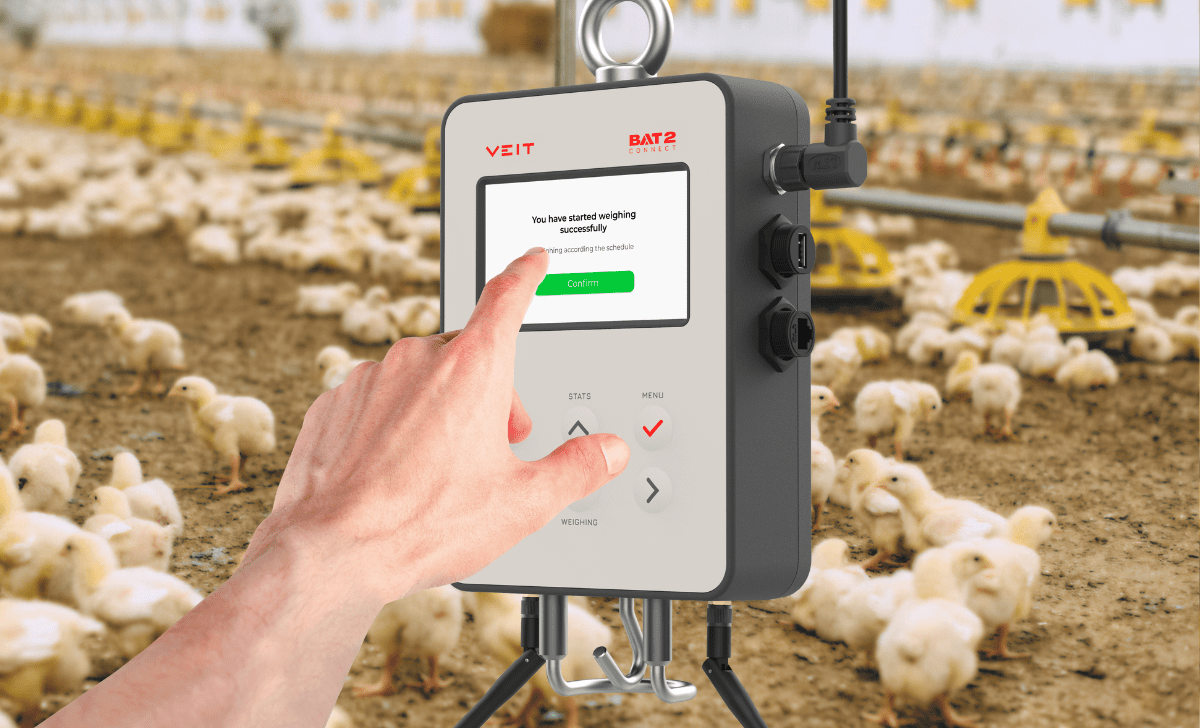Understanding poultry stress symptoms is crucial for maintaining healthy, productive flocks. Stress compromises bird welfare, reduces performance, and increases disease susceptibility (Ncho et al., 2024). Early detection through proper poultry welfare assessment enables timely intervention.
Behavioral Signs of Stress
Poultry behavioral stress signs manifest in observable changes. Stressed birds show reduced activity, increased aggression, and altered feeding patterns (Iraqi et al., 2024). Chicken stress indicators include reduced preening, abnormal vocalizations, and social withdrawal. Fear responses increase when birds experience chronic stress, affecting their ability to cope with daily challenges (PoultryHub Australia, 2020).
Physical Indicators
Signs of stress in poultry flocks include footpad dermatitis, poor feather condition, and reduced body weight uniformity (Shynkaruk et al., 2023). Modern chicken welfare monitoring techniques confirm the long-held understanding that elevated heterophil to lymphocyte ratios indicate chronic stress responses. Stressed birds display rapid panting during heat stress and show decreased mobility.
Environmental and Disease Factors
Stress stems from multiple sources. Poor ventilation, excessive stocking density, and temperature extremes create environmental stress (Dawkins et al., 2004). Disease outbreaks trigger physiological stress responses. Suboptimal litter quality increases contact dermatitis risk.
The Power of Weight Monitoring
Modern poultry welfare assessment relies heavily on automated weight tracking. The BAT2 Connect automatic poultry scale enables continuous monitoring without handling stress. This system calculates weight uniformity, a key welfare indicator that reflects flock health (Mels et al., 2023).
Research demonstrates that body weight uniformity below 80% indicates welfare problems requiring intervention (Knierim et al., 2020). In addition to automated weighing, leading poultry operations enhance their overview of their flocks by manually weighing samples in regular intervals. For such farms, specialized manual scales like the BAT1 manual poultry scale offers portable precision with automated data recording, while offering the added benefit of physically assessing each bird weighed.
Integration with BAT Cloud provides real time flock performance tracking. This enables rapid response to environmental stressors before they escalate into serious welfare issues.
Stress Reduction Strategies
Reducing stress in commercial poultry requires comprehensive management. Stress reduction in chickens begins with environmental optimization. Maintain proper temperature and humidity levels. Ensure adequate ventilation and air quality (Bustamante et al., 2015). Provide sufficient feeder and drinker space to minimize competition.
Mitigating poultry stress includes reducing stocking density where feasible. Lower densities improve litter quality and decrease disease transmission (Shynkaruk et al., 2023). Implement consistent daily routines to minimize fear responses. Train workers in gentle bird handling techniques.
Regular health monitoring prevents disease-related stress. Establish biosecurity protocols to limit pathogen exposure. Vaccinate appropriately and consult veterinary professionals when disease symptoms appear.
The Bottom Line
Successful poultry welfare assessment combines behavioral observation with objective data collection. Modern weighing technology provides the quantitative insights needed for proactive management. Environmental control, proper biosecurity, and attentive stockmanship work together to minimize stress and optimize flock performance.
Early recognition of stress symptoms allows producers to intervene before welfare and productivity decline. Investing in proper monitoring tools and management practices delivers healthier birds and improved economic returns.
Cited Sources
Bustamante, E., García-Diego, F.J., Calvet, S., Estellés, F., Beltrán, P., Hospitaler, A. and Torres, A.G., 2015. Exploring ventilation efficiency in poultry buildings: the validation of computational fluid dynamics (CFD) in a cross-mechanically ventilated broiler farm. Energies, 8(3), pp.2605-2623. https://www.mdpi.com/1996-1073/8/3/2605
Dawkins, M.S., Donnelly, C.A. and Jones, T.A., 2004. Chicken welfare is influenced more by housing conditions than by stocking density. Nature, 427(6972), pp.342-344. https://www.nature.com/articles/nature02226
Iraqi, M.M., Fathi, M.M., EL-Dlebshany, A. and Amin, E.M., 2024. Using major genes to mitigate the deleterious effects of heat stress in poultry. Poultry Science, 101(11), p.102157. https://www.sciencedirect.com/science/article/pii/S0032579122004126
Knierim, U., Gieseke, D., Michaelis, S., Keppler, C., Spindler, B., Rauch, E., Petow, S., Andersson, R., Schultheiß, U., & Zapf, G. (2020). Tierschutzindikatoren: Leitfaden für die Praxis – Geflügel. KTBL.
Mels, C., Niebuhr, K., Futschik, A., Rault, J. L., & Waiblinger, S. (2023). Development and evaluation of an animal health and welfare monitoring system for veterinary supervision of pullet farms. Preventive Veterinary Medicine, 217, 105929. https://doi.org/10.1016/j.prevetmed.2023.105929
Ncho, C.M., Goel, A., Gupta, V. and Choi, Y.H., 2024. Abiotic stressors in poultry production: A comprehensive review. Journal of Animal Physiology and Animal Nutrition. https://onlinelibrary.wiley.com/doi/10.1111/jpn.14032
PoultryHub Australia, 2020. Poultry Stress. University of New England. https://www.poultryhub.org/all-about-poultry/husbandry-management/poultry-stress
Shynkaruk, T., Long, K., LeBlanc, C. and Schwean-Lardner, K., 2023. Impact of stocking density on the welfare and productivity of broiler chickens reared to 34 d of age. Journal of Applied Poultry Research, 32(2), p.100344. https://www.sciencedirect.com/science/article/pii/S1056617123000120
